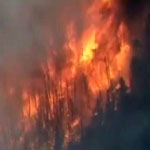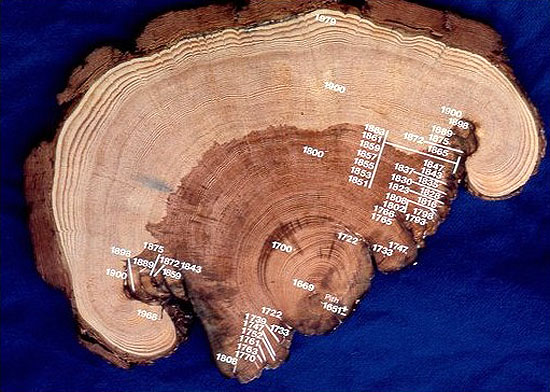Tree-ring records suggest today’s megafires are truly unusual
Researchers believe today's megafires are caused by climate change and human activity over the last century.

By Margaret Allen
SMU Senior Research Writer
Today’s mega forest fires in the southwestern U.S. are truly unusual and exceptional in the long-term record, suggests a study that examined hundreds of years of ancient tree ring and fire data from two distinct climate periods.
Researchers constructed and analyzed a statistical model that encompassed 1,500 years of climate and fire patterns to test, in part, whether today’s dry, hot climate alone is causing the megafires that routinely destroy millions of acres of forest, according to study co-author and fire anthropologist Christopher I. Roos, Southern Methodist University, Dallas.
The researchers found that even when ancient climates varied from each other — one hotter and drier and the other cooler and wetter — the frequencies of year-to-year weather patterns that drive fire activity were similar.
The findings suggest that today’s megafires — at least in the southwestern U.S. — are atypical, according to Roos and co-author Thomas W. Swetnam, the University of Arizona. Furthermore, the findings implicate as the cause not only modern climate change, but also human activity over the last century, the researchers said.
The U.S. would not be experiencing massive large-canopy-killing crown fires today if human activities had not begun to suppress the low-severity surface fires that were so common more than a century ago,” said Roos, an assistant professor in the SMU Department of Anthropology.
Today’s extreme droughts caused by climate change probably would not cause megafires if not for a century of livestock grazing and firefighting, which have combined to create more dense forests with accumulated logs and other fuels that now make them more vulnerable than ever to extreme droughts. One answer to today’s megafires might be changes in fire management.
“If anything, what climate change reminds us is that it’s pretty urgent that we deal with the structural problems in the forests. The forests may be equipped to handle the climate change, but not in the condition that they’re currently in. They haven’t been in that condition before,” Roos said.
Roos and Swetnam, director of the University of Arizona Laboratory of Tree-Ring Research, published their findings in the scientific journal The Holocene.
Related Links:
- Climate Central: New Mexico Wildfire Now a Record-Setting ‘Megafire’
- U. S. Forest Service
Tree Ring Study
An unprecedented study combining hundreds of years of tree ring and fire scar data from the southwest United
States suggests todays mega forest fires are truly unusual, says Christopher I. Roos, fire anthropologist at SMU.
# # #
